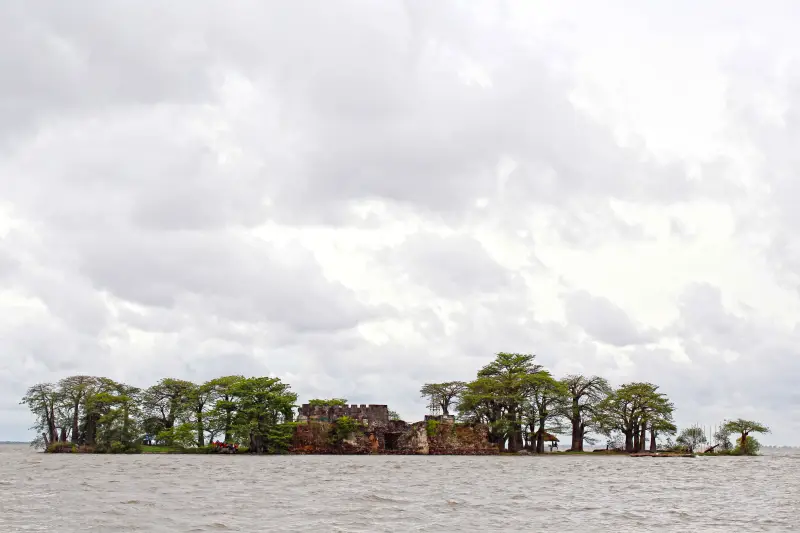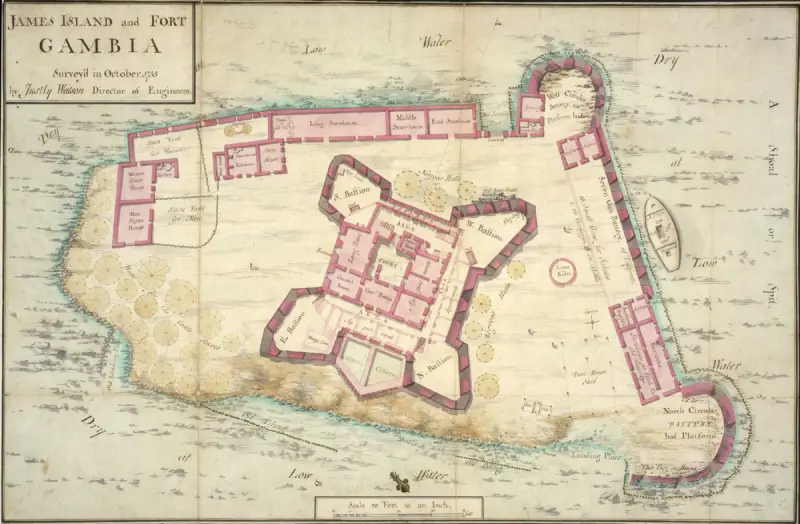Slaver Island in Africa

Kunta Kinte Island
The smallest country on mainland Africa may seem completely unremarkable at first glance. It stretches along the Gambia River and is surrounded by Senegal. But in stories The country has a tragic and dark period, since slaves were actively exported along the Gambia River - it flows into the Atlantic Ocean.
Slave ships have been arriving on one island for centuries. Kunta Kinte, located 30 km from the river mouth, remains one of The Gambia's most visited sites and is also a UNESCO World Heritage Site.
The beginning of the history of the island of Kunta Kinte
The first explorers to reach Kunta Kinte were the Portuguese and Italians. In May 1456, the island was discovered by two Italian explorers leading a Portuguese expedition. These were the Genoese trader Usus di Mare and the Venetian explorer Alvise Cadamosto. They landed on the island to bury one of their dead shipmates. From that moment on, the island was known to everyone as St. Andrew's Island - it was named after the deceased.
Just two years later, the famous Portuguese navigator Diogo Gomes also landed here, and the Portuguese acquired the island from the local rulers, almost immediately starting construction of a fort. Opposite they built a settlement known as Saint-Domingue.
Soon enough, the island will become a center of cultural exchange between Europe and Africa. Trade routes will be established. Alas, it will soon take on a menacing aspect that will scar the world for centuries to come. This dark feature was the slave trade.
The Gambia River is one of the most navigable in Africa. At first the island of Kunta Kinte was a fort and trading port, but it soon became a central point for the shipment of slaves.
The vast majority of African slaves who were shipped across the Atlantic from this island were actually brought by other Africans. They were either captives for whom representatives of their tribes did not pay a ransom, or simply kidnapped to be sold into slavery.
One way or another, European settlers stumbled upon a complex network of warring African tribes, most of whom sought to sell their compatriots and doom them to a grim fate overseas.
Hand in Hand
Of course, not only slaves were traded on this island.
The best goods of Africa were also exported from here: ivory, gold, precious stones, ores. After popularity, the name was changed to James Island. And it remained with it until 2011, when it was renamed Kunta Kinte, a truly Gambian name.
The next owners of the island came from Courland. I really didn’t think that the Courland traders had reached those places.
After purchasing the island around 1651, they began building a more powerful fort and used the island as a base to establish trade routes between Africa and the Baltic. The goal of the Courlanders was to establish a permanent settlement here.
Soon pastors and couples were sent to the island to settle. The fort was built in accordance with traditional construction methods of the Polish-Lithuanian Commonwealth. It was rectangular with powerful bastions at each corner.

Map of the fort, 1775
From that moment on, everyone wanted to get a piece of the wealth that was in The Gambia.
The Duke of Courland was determined to organize a full-fledged serious expedition to colonize these lands, but he lacked people and experienced commanders. For this reason, he was forced to rely on foreign navigators. His first expedition under the command of a Dutchman was a failure.
The second expedition, led by a Dane, also failed.
In the course of subsequent events, due to political instability in the Polish-Lithuanian Commonwealth, the garrison of James Island lost contact with their homeland. The Dutch quickly took advantage of this instability by offering to help supply the island in exchange for complete control of it. As a result, the island passed into their hands.
In the subsequent period, there were many conflicts between the Courlanders and the Dutch over control of the island. The fort was sacked several times, and the garrison was reduced to only seven people.
The Dutch briefly controlled the island until the British arrived. They captured Kunta Kinte in 1661.
The company received a royal charter from Charles II and dealt mainly in gold, ivory and slaves. The British began building a larger fort.
However, in the following decades the French harassed them, stopping construction and trying to subjugate the island. Nevertheless, the British firmly held James Island, because it was their first outpost in West Africa and an excellent source of income.
But in 1779, French troops launched a full-scale attack on the island fort, managing to dislodge the British and plunder the island.
By 1815 the island was abandoned forever and the fort was never rebuilt.

Remains of the fort
Today tourists visit the ruins of the fort. The remains of the fortress walls, slave houses, shops, forges and the governor's kitchens have been preserved.
Both the island and the ruins on it are threatened by erosion and rising water levels. Heavy rains and hurricanes that occurred in August 2016 led to the destruction and damage of buildings and partial flooding of the island, which decreased in size.
Information